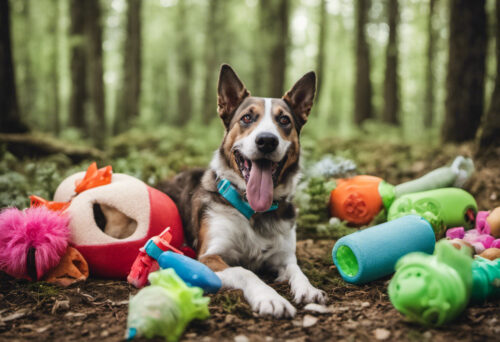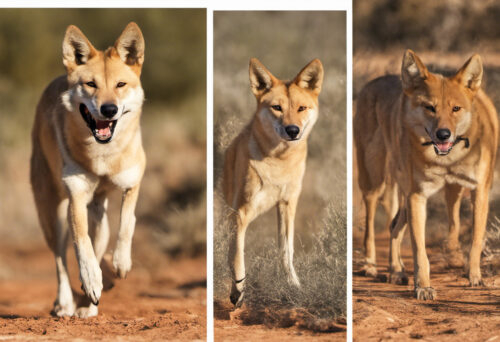Here’s a fun thought – imagine if our four-legged friends could go green! Environmental consciousness has indeed become a central theme of the 21st century, and it’s not just limited to recycling or driving electric cars. Believe it or not, it can extend to our choice of pets as well. We’re here to talk about what are considered to be the most environmentally friendly dog breeds and how this concept can influence your choice of a canine companion. So strap in, folks, this is going to be a tail-wagging ride!
What Makes a Dog Breed Environmentally Friendly?
Let’s first unravel the mystery around what makes a dog breed “environmentally friendly.” It’s a comprehensive evaluation of the breed’s overall impact on the environment, influenced by various factors.
The dog’s size is one of the most significant determinants of its environmental impact. It plays into their dietary needs – a larger dog typically requires more food, thereby increasing the environmental cost of food production. Additionally, size contributes to the amount of waste a dog produces, which can add to environmental pollution if not properly disposed of.
Another factor is the dog’s dietary requirements. Certain breeds have specific dietary needs, often met by specialized, resource-intensive foods. On the other hand, some breeds are happy-go-lucky, ready to thrive on various diets without requiring much in the way of specialized food.
According to a study conducted by Gregory Okin, a professor at UCLA’s Institute of the Environment and Sustainability, “If American’s dogs and cats formed their own country, their meat consumption would rank fifth in the world”
Let’s not forget about grooming needs, a factor often overlooked in the environmental tally. Breeds that require frequent baths, haircuts, and other grooming services often contribute to higher water usage and the production of pet-specific grooming products. On the flip side, low-maintenance breeds need fewer of these resources.
Finally, a breed’s general health profile is crucial. Breeds with fewer health issues typically require fewer visits to the vet, fewer medications, and fewer resource-intensive medical treatments.
Keep in mind that this doesn’t mean that any dog breed is entirely “green.” Every pup will leave a carbon pawprint, but some breeds might tread a little lighter on our beloved Mother Earth.

The Top Environmentally Friendly Dog Breeds
Looking at those factors, we can identify some breeds that tend to have a smaller environmental impact.
- Small Breeds: The “small but mighty” principle applies here. Smaller dogs like Chihuahuas, Dachshunds, and French Bulldogs have a lesser environmental footprint due to their size. They require less food to satiate their hunger, leading to reduced food production. In addition, their small size naturally results in less waste, which aids in cutting down pollution. Plus, their petite size often means they require fewer resources for grooming and other care.
- Healthy Breeds: Healthy dogs make for a healthy environment. Breeds that have a reputation for robust health can be more environmentally friendly. For instance, the Australian Cattle Dog, known for its stamina, and the Shiba Inu, famed for its feisty independence, are recognized for having relatively few breed-specific health issues. This means they typically require fewer vet visits, fewer medications, and fewer resource-intensive treatments.
- Low-maintenance Breeds: Low-maintenance breeds that require minimal grooming can also be considered more eco-friendly. Consider the Basenji, a breed so clean it’s often compared to cats in terms of self-grooming. Known as the “barkless dog,” the Basenji is not only quieter than many breeds (your neighbors will thank you), but its low-maintenance coat means fewer baths and grooming products.
It’s important to note, though, that individual dogs within these breeds can have different environmental impacts based on their lifestyle, diet, and health. The dog’s environment and the care it receives play significant roles in this regard.
Adopt, Don’t Shop
Adoption is a word that rings with positivity and love. It not only brings a furry friend into your life but also plays a crucial part in reducing environmental impact. By adopting a pet from a shelter or rescue group, you’re providing a home to a deserving animal and reducing the demand for breeding new puppies. This helps cut down on the resources used in breeding operations and the associated environmental impact.
Plus, mixed breed dogs, which make up a significant portion of shelter populations, often benefit from “hybrid vigor” – they have fewer breed-specific health issues than purebred dogs. This could mean fewer vet visits, fewer medications, and fewer resources used over the dog’s lifetime. Adopting an adult dog also has environmental benefits as you’re skipping the resource-intensive puppy stage.
“The wonderful thing about mixed breed dogs is that they are one-of-a-kind. With purebred dogs, you know what you’re going to get…But with mixed breeds, you get a little bit of everything,” says Dr. Gary Weitzman, president of the San Diego Humane Society and SPCA.
Caring for Your Dog in an Environmentally Friendly Way
No matter the breed, you can make choices to reduce your pup’s environmental impact. Choose a high-quality, sustainable diet for your dog. Opt for dog foods that use responsibly sourced ingredients and prioritize companies with environmentally friendly practices.
Use biodegradable poop bags for waste disposal, reducing plastic usage. Instead of buying new toys, consider DIY options, or choose toys made from recycled or sustainable materials. Regular vet visits and preventative care can keep your pup in top health, reducing the need for treatments or medications down the line.
“Our dogs, ourselves: The story of a singular bond” by Alexandra Horowitz can be a great reference while writing about how humans and dogs affect each other’s lives. This book provides a wealth of insights into dogs’ world and human interaction with them.
Conclusion
Renowned dog behaviorist Cesar Millan once said, “In the dog world, there is no Microsoft, no Hollywood… they are just dogs. They live in a world of peace. It is paradise.”
Whether you’re a fan of petite pups like Chihuahuas or you’re all about the big breeds like the Great Dane, it’s important to think about our furry friends’ impact on the environment. Your choice of breed and the care you provide can play significant roles in your environmental footprint. Going green isn’t just for humans, and our pets can contribute to a sustainable future as well. After all, there’s no planet B, and every step – or pawprint – in the right direction helps!



